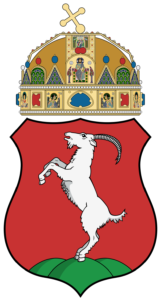
As Kecskemét was situated at an important trading route, it grew as a customhouse and a marketplace; in 1368 it was identified in one of King Louis of Hungary’s charters as an oppidum (town). The town’s active economic life and relatively dense population attracted more traders, craftsmen, and residents, including Jews who became an important part of the town. It was the time when the keeping of grey cattle was increasing. By the beginning of the 18th century, residents held nearly 30,000 cattle, which grazed on an almost 2,000-square-kilometre (770 sq mi) field.

The Ottomans captured the town in 1541 and it was attached—luckily—to the Pasha of Buda so it was not a harassed and overtaxed Sipahi dominion. Later, in 1565, Kecskemét also became a treasury-owned settlement of the Sultan so they could develop a more independent local authority of the city. In addition to this, the city was protected by a defensive palisade.

Despite the constant wars, the city enjoyed relative peace and received many inhabitants running away from other villages, eventually becoming the most significant settlement of the area between the River Danube and the River Tisza.
Here is more about the Hungarian Grey Cattle that was the main source of living in the area during the Ottoman wars period:
https://www.hungarianottomanwars.com/essays/hungarian-grey-cattle/
The symbol of the city’s privileges became a mysterious Turkish kaftan that had been given to the Judge of the city to wear when the Turks would come to collect the taxes. The records of the city say:
“It was in the year Anno Domini 1596 at the time of Eger castle’s taking when Sultan Muhamet II appeared in front of the city. The citizens of Kecskemét went before him with presents, giving him six hundred sheep, one hundred cattle, and fourteen wagons of bread . . . and they begged the Sultan to send them a Bey to protect them from the armies. The Sultan gifted them with three hundred gold pieces and gave them a golden woven kaftan, telling them to go home and that they should put the coat on if someone wanted to hurt them. When later Turkish soldiers wanted to sack the city, the Judge rode out in this kaftan. Amazingly, all the Turks paid respect immediately and left the city alone.” It was how they could evade paying taxes but today this practice has been changed.

The city survived the one hundred and fifty years of Ottoman rule quite intact but it was destroyed by Serbian attackers in 1707.
Dear Readers, I can only make this content available through small donations or by selling my books or T-shirts:
Please, feel free to support me with a coffee here:
You can check out my books on Amazon or Draft2Digital, they are available in hardcover, paperback, or ebook:
https://www.amazon.com/dp/198020490X or at https://books2read.com/b/boYd81

My work can also be followed and supported on Patreon: Become a Patron!http://Become a Patron!
[wpedon id=”9140″]

https://hungarianottomanwars.myspreadshop.com/all



